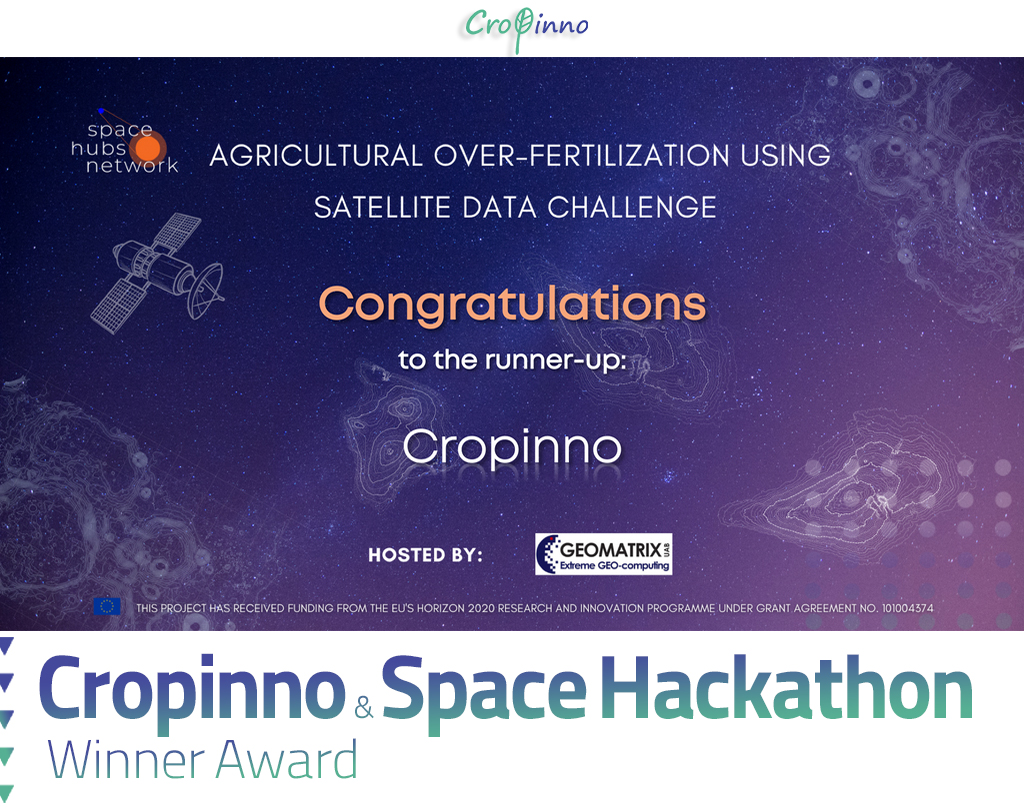We are very excited to announce that our team at Cropinno participated in Space Hubs Network’s Space Hackathon challenge: “Identification of Agricultural Over-fertilization Using Satellite Data” and won the runner-up award at the final stage of the competition.
In this challenge, contestants were asked to take a closer look at the problem and come up with a proper solution; a demonstration of their suggested algorithms based on the use of Earth Observation (satellite) data, which is capable of detecting early stages of over-fertilizing in specific crops, as well as giving indications of soil recovery by implementing sustainable farming practices.
We aim high, think big & work hard to change agriculture into something more sustainable.
Fertilization: A Brief Introduction
Fertilizers are material used to provide plants the nutrients which are deficient in soil, to develop plant growth. They are added to crops or lands in order to produce more & higher quality of agricultural products. Fertilizers provide crops with nutrients like nitrogen (N), potassium (K) & phosphorus (P), which all are substantial in crop multiple growth stages, but over-fertilization of any of these elements should be really avoided.
Agricultural fertilizers can be divided into three categories:
- Organic fertilizers (like manure and compost): These fertilizers are made from animal feces or plant/animal decomposed matter.
- Mineral fertilizers (like phosphorus and potash): Just like any minerals, these are mined from the environment (surface or subsurface), then crushed or chemically treated to be prepared for use.
- Industrial fertilizers (like urea, ammonium nitrate and ammonium phosphate): This type of fertilizers is produced industrially through chemical reactions.
How big of a problem is Over-fertilization?
Applications of excess fertilizers can be harmful to most plants & agricultural crops, while the amount of injury may vary with different species & genotype, different types of fertilizers and the time of application. accumulation of soluble salts may not be visible before concentrations become dangerously high; The very high salt concentrations in the soil may reduce its osmotic potential, decrease water absorption, cause leaf dehydration, stomatal closure, reduction in photosynthesis, leaf injury, and plasmolysis of root cells.
Over-fertilization in early stages could result in low quality seedlings and their reduced capacity for growth and survival when outplanted. Early stages of over-fertilization are very difficult to detect, as different crops may have different reactions to excess fertilizing. In such case, AI-powered technologies such as Cropinno can now be plenty helpful in automatically collecting & analyzing satellite imagery data & producing maps of changes for any plant parameters in every growth stage.
So, yes! the possibilities offered by space are just enormous, and one thing we have learned is that there is always enough “space” to turn our ideas into reality! So, we aim high, think big and work hard to change farming into something more sustainable, through precision agriculture.

